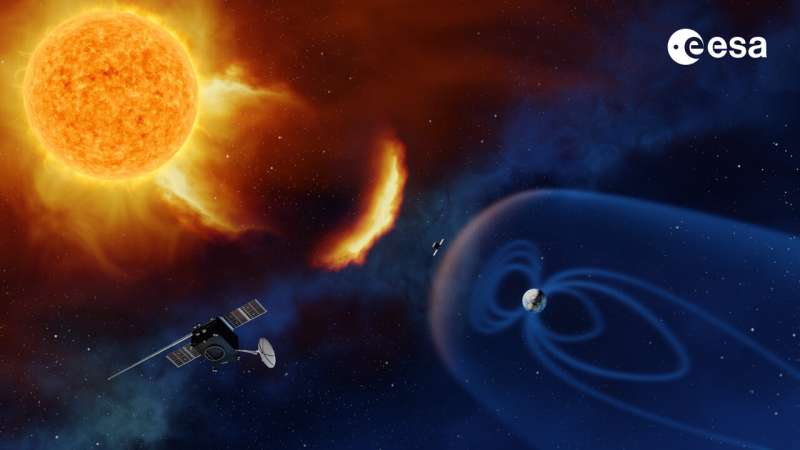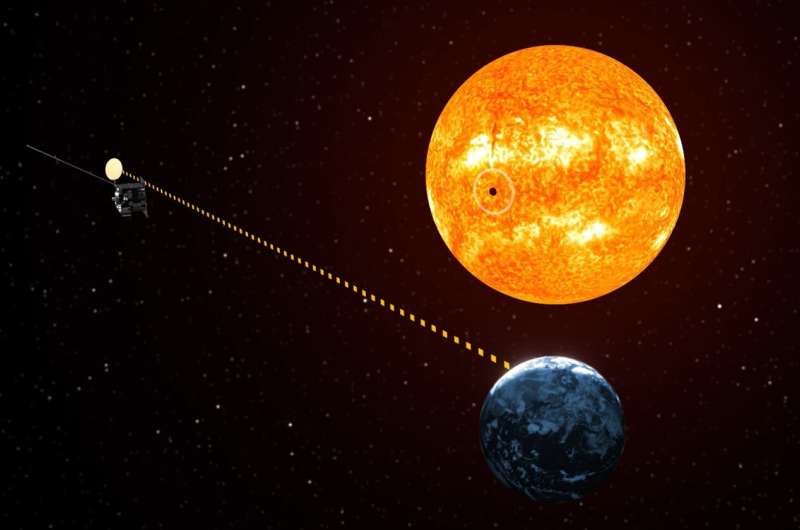Finally, they agreed on a winner.
"We are thrilled with our mission's new name," explains Juha-Pekka Luntama, ESA's Head of Space Weather.
"When I first heard it, I thought it was just spot on. That is exactly what we do, we keep a vigilant watch and guard Earth."

In Latin, vigilis exceptus means sentry, or guard, while vigilia means wakefulness and the act of keeping a devoted watch. The judges were particularly impressed with how the name resonated with the mission's role—as a devoted guardian, keeping constant watch over the Sun, for Earth.
Almost immediately, ESA's design team began working on a patch that would evoke Vigil's meaning. Throughout various iterations, the symbol of a soaring, watchful bird remained.
Emmet Fletcher, Head of ESA's Branding and Partnership Office explained the rationale behind the patch.
"In this stunning design, the team has depicted a stylised wing of protection which shelters Earth from the Sun's hazardous radiation. The wing emanates from Vigil's orbital position and the critical geometry of this Lagrange point relative to the Earth and Sun is traced out. To balance out the mission patch, the L5 point is emphasised with the five stars shown just above the blue Earth."
And it's the position of the wing, originating from the side of the Sun-Earth system, which really pleased the mission team.
"We really like the patch design and how it still incorporates the vital importance of geometry to this mission," explains Giuseppe Mandorlo, Mission Manager for ESA Vigil.
"The Vigil mission will get a sneak peek of potentially hazardous solar activity only because of its location in space. Trailing 'behind' Earth at the fifth Lagrange point, ESA's Vigil will see the side of the Sun, observing conditions before they rotate around to face our home."
Protecting modern life
We are now reliant on interlinked technologies, in space and on Earth, for our everyday lives. But this infrastructure, and all that relies on it, is vulnerable.
Solar storms can damage power grids, disrupt telecommunications and threaten satellites and the vital services they provide. At the same time, as we launch ever-more satellites into orbit we are also creating increasing amounts of debris, dramatically increasing the risk of collision for current and future missions: our success in space could be our downfall.
As part of ESA's Vision for the future, the new Protect 'accelerator' will ensure the resilience of technologies on which modernity depends. By detecting and providing advance warning of oncoming solar storms, we can protect our infrastructure in space and on the ground. By fostering the sustainable use of orbits around Earth—a finite and limited resource—we can ensure the benefits of space will remain accessible to future generations.
Explore further

